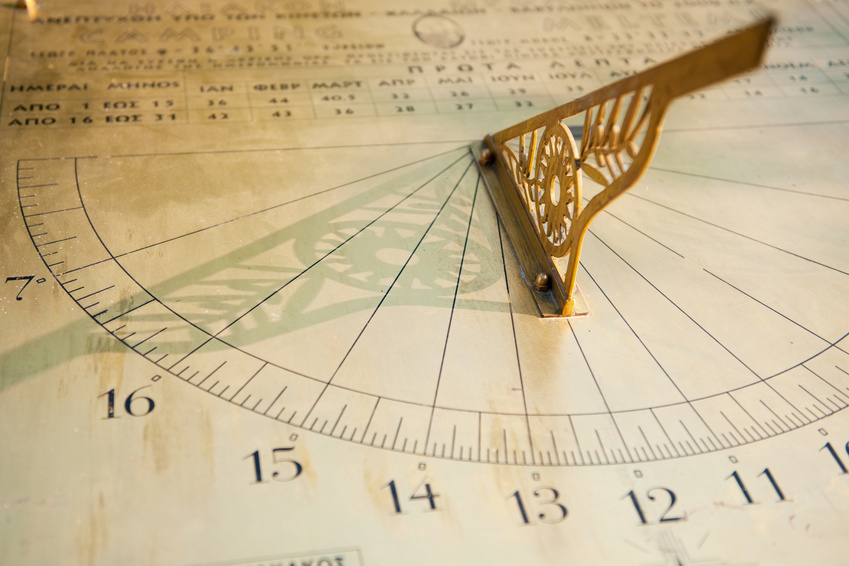The sun has always had a unique and essential meaning for mankind. Not only is the sun most important for photosynthesis and therefore for the existence of life on earth as such, but men have also used it as a basic source for measurings from a very early point of their existence on.
 (Photo-Credit: Ivonne Wierink by Fotolia.com)
(Photo-Credit: Ivonne Wierink by Fotolia.com)
The sun has always had a unique and essential meaning for mankind. Not only is the sun most important for photosynthesis and therefore for the existence of life on earth as such, but men have also used it as a basic source for measurings from a very early point of their existence on.
The first solar clocks were used as early as 2500 B.C. in China. They were no more than sticks or poles, pushed into the ground, and the length of the shadow they cast gave people an idea of time measurement. As much as two thousand years later, solar clocks were also used in Greece. The “shadow stick” was then called Gnomon, which means “detector of time”. The science involving creation and understanding of solar clocks is called gnomonics.
Measuring time by “feet”
The first mobile clock was the human body. The shadow that was cast by the body was used to measure time. The length of the shadow was measured in feet. So-called hour boards were invented, that were based on an average height of seven feet and were intended to create a standardized measurement of time. You were invited for dinner at a certain length of feet. Depending on the size of the measuring person’s shoes, there could be remarkable variations in time. However, the “precision” of the system was sufficient for the people living with it.
The first „precise“ solar clocks
In the Middle Ages, prayer clocks were used throughout Europe. Clergymen in churches and monasteries needed a measure of time to keep up regular services. The time did not have to be measured as exactly as to show the hour or the minute but the different periods of time had to be measured so that they could return repeatedly. Morning services, noontime obligations, evening services, etc… During the Renaissance, solar clocks made a significant step forward in their development. Devices that cast a shadow (poles, columns, pillars, etc…) were adjusted parallel to the earth axis in direction of the celestial poles. Together with the horizontal level of the places they were installed, these so-called pole bars formed an angle that equaled the geographical latitude. What was remarkable about this was, that now the indication of time only depended on the direction of the shadow and now longer on the position of the sun (and thus the length of the shadow) that varied throughout the seasons. These newly invented time scales could be used at any time and point of the year.
The intensity of the sun
Today, we only use solar clocks as decorative accessories in rooms or in our garden. However, we still measure the sun. Only that we no longer focus only on its path across the sky but also and more importantly on the intensity of its radiation. This is of special interest for the development of photovoltaic devices and plants. These are intended to be installed either on the roof tops of private households or agricultural buildings or combined to huge solar power plants for public use. Even though the sun is always there, its radiation can vary and not all places of the earth are equally suited to profit from its power.
The sun – a power plant
Whoever plans to install a photovoltaic plant should in advance make sure that the intended place of installation is able to provide the intended amount of power. When the plant is installed, it must be secured against extreme weather conditions. Lufft is able to support planers and operators of solar plants with specialised measuring instruments. These instruments help e.g. to predict dangerous weather conditions in order to lie flat the panels or keep the panels aligned to the sun.
What is best about this is: Lufft measuring instruments are by far more precise than the best solar clocks could have ever been.



